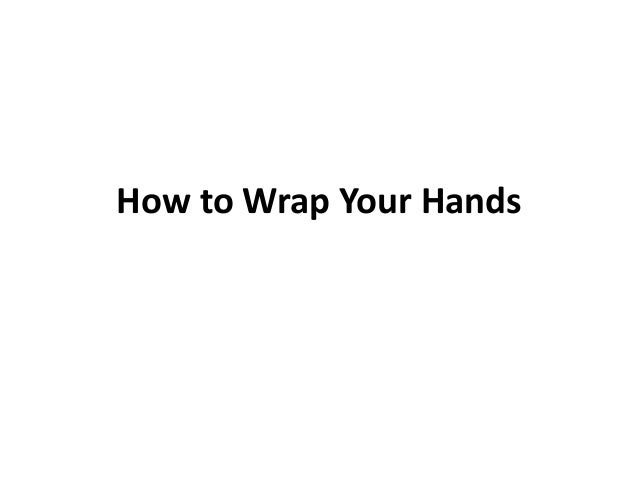How to Wrap Your Hands
•Download as PPTX, PDF•
0 likes•3 views
Learn how to wrap your hands to increase punching power and prevent injury. I learned this from Wildcard Boxing gym. Tested and approved by the pros.
Report
Share
Report
Share

Recommended
Recommended
More Related Content
More from AQF Sports
More from AQF Sports (20)
Powerlifting Belt vs Weightlifting Belt: What Is the Difference

Powerlifting Belt vs Weightlifting Belt: What Is the Difference
EVERYTHING YOU 'K'NEED TO KNOW ABOUT KNEE WRAPS AND KNEE SLEEVES

EVERYTHING YOU 'K'NEED TO KNOW ABOUT KNEE WRAPS AND KNEE SLEEVES
The Advantages Of Knee Sleeves: What They Are And When To Wear Them

The Advantages Of Knee Sleeves: What They Are And When To Wear Them
Ectomorph, Endomorph And Mesomorph: How To Train For Your Body Type

Ectomorph, Endomorph And Mesomorph: How To Train For Your Body Type
How to Wrap Your Hands
- 1. How to Wrap Your Hands
- 3. Why Wrap Your Hands? Then handwrap’s purpose is to protect a boxer’s most important weapon, his hands! The hands are made up of many small joints and small bones that could easily fracture from the impact of repeated punches. Handwraps are there to hold your hand together providing support for your wrists, fingers, knuckles, and the entire hand itself. Many people incorrectly think handwraps are for extra cushion or protection for your knuckles.
- 4. The handwraps are there to secure all your loose joints and moveable bones. The handwrap fastens all your joints together so the shock is better distributed across your entire hand. You don’t want your joints to be moving freely and independently when the hand strikes an object. You can suffer a fracture if joints are moving in their own direction.
- 5. If your hands are loose when you punch, it’s very easy for small joints in your hand to collapse over each other and break. Even if you don’t break your hand, you don’t want to risk hand injuries that prevent you from doing other things in life like typing on a computer, holding a pen, or carrying things. Save your hands for life after boxing!
- 6. How to Wrap Your Hands: You will need a pair of handwraps. A good length is 180″, but small hands can do with just 120″. The semi-elastic, also known as “Mexican wraps” are my favorite for their comfort and performance. You should avoid any thick inelastic handwraps or handwrap gloves, these do not offer the same level of support. (The gel handwraps do not tighten your fist when you close your hands.)
- 7. 1. Loop the thumb and wrap BEHIND the hand: You go down the back of the hand so the handwrap tightens when you make a fist.
- 8. 2. Three times around the wrist: This provides support for the wrist. If you have short handwraps or big hands, you can do just 2 times. Some fighters like having loose wrists (for angled hooks and uppercuts).
- 9. 3. Three times around the hand: You’re wrapping around the palm of your hand. Don’t worry so much about covering the knuckles.
- 10. Bring it down to the back of your thumb.
- 11. 4. Three X’s through the fingers: Now you begin to create X’s on the back of your hand as the handwrap goes between your fingers and crosses the back of your hand. This part pulls your knuckles together for support but keeps your knuckles separated so they don’t collapse or break over each other.
- 12. • Wrap between your pinky and ring fingers. • Now over to the side. • Now down to the bottom of your hand. The handwrap forms an “X” on the back of your hand. • Now back to the top of your thumb again. • Now between the middle and ring fingers. • The second “X” is formed.
- 13. • Back to the top of the thumb and now between index and middle fingers. • Now the third and final “X” is formed. All fingers properly separated. • Finish on top of the thumb.
- 14. 5. Around the thumb: • Go once around the thumb. • Now go down the back of the hand. 6. Lock the thumb: • Go behind the thumb…pay attention carefully to the next step. • Go down the palm instead of wrapping all the way around the thumb. This further secures the thumb and locks the handwrap into place so it doesn’t get loose while you fight. (Notice how the handwrap changes directions.)